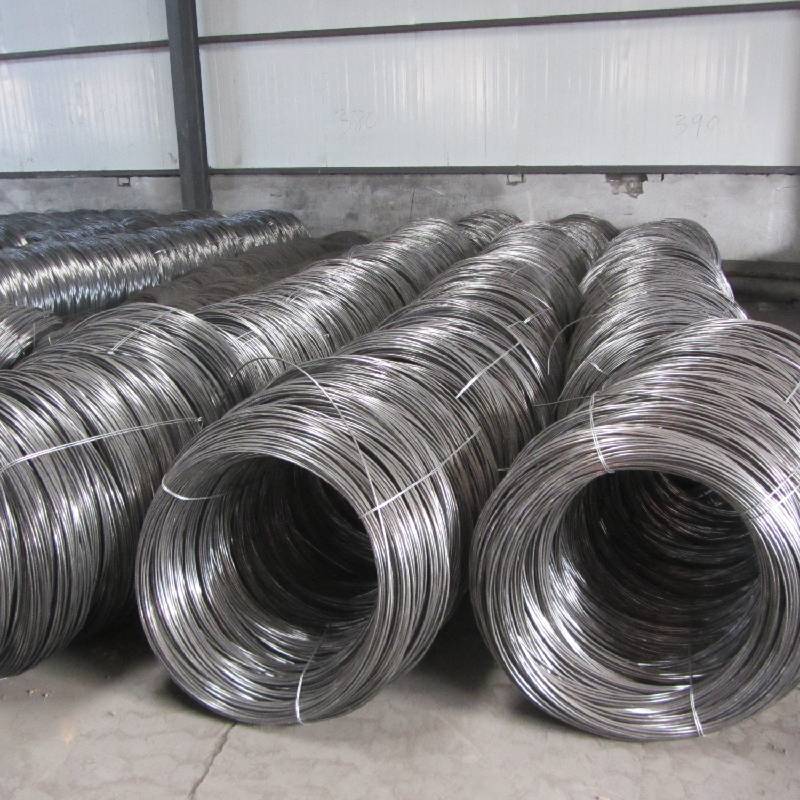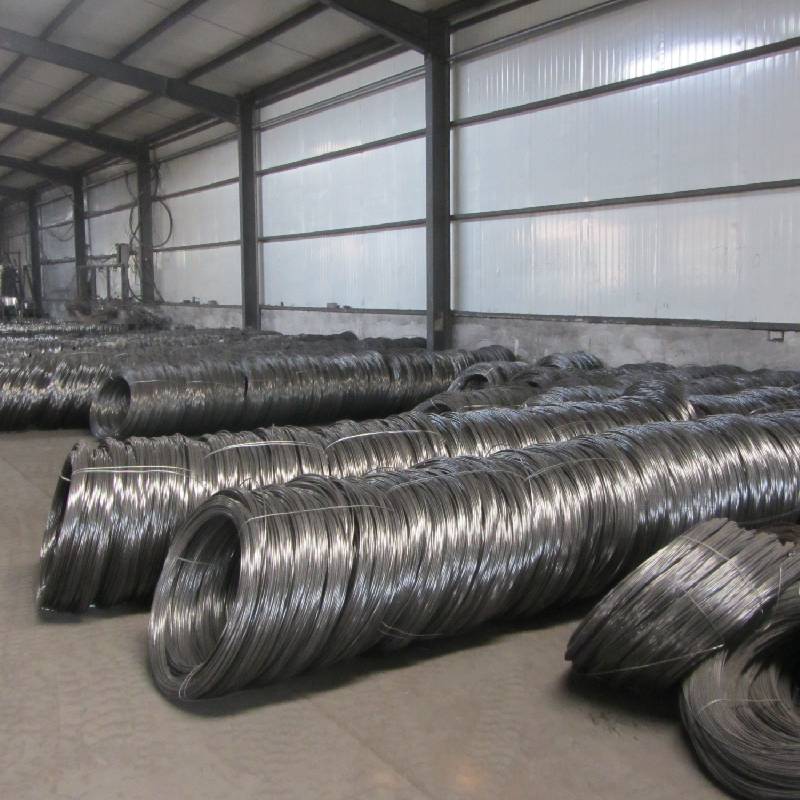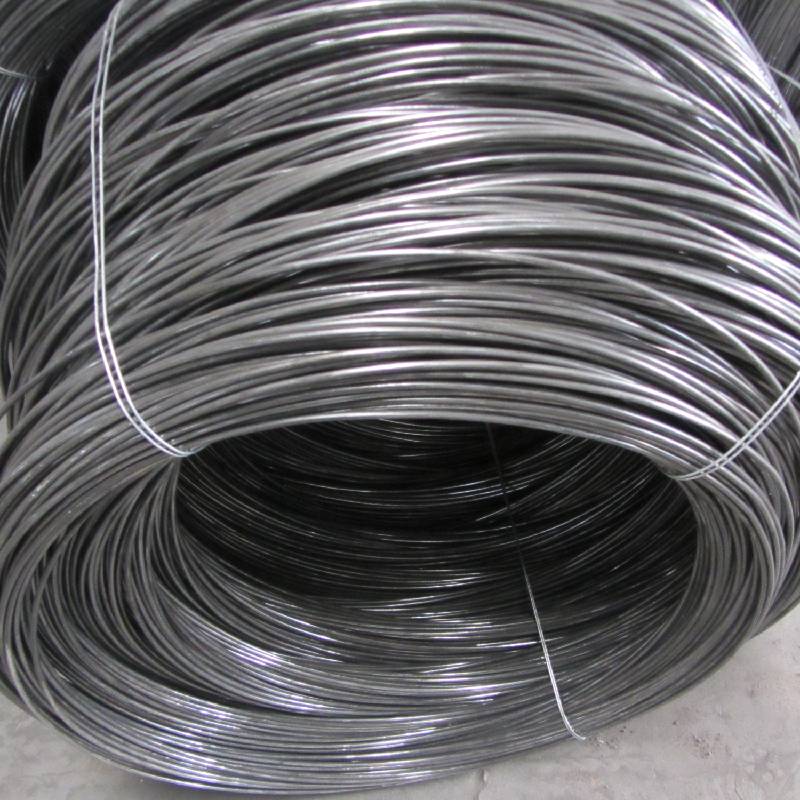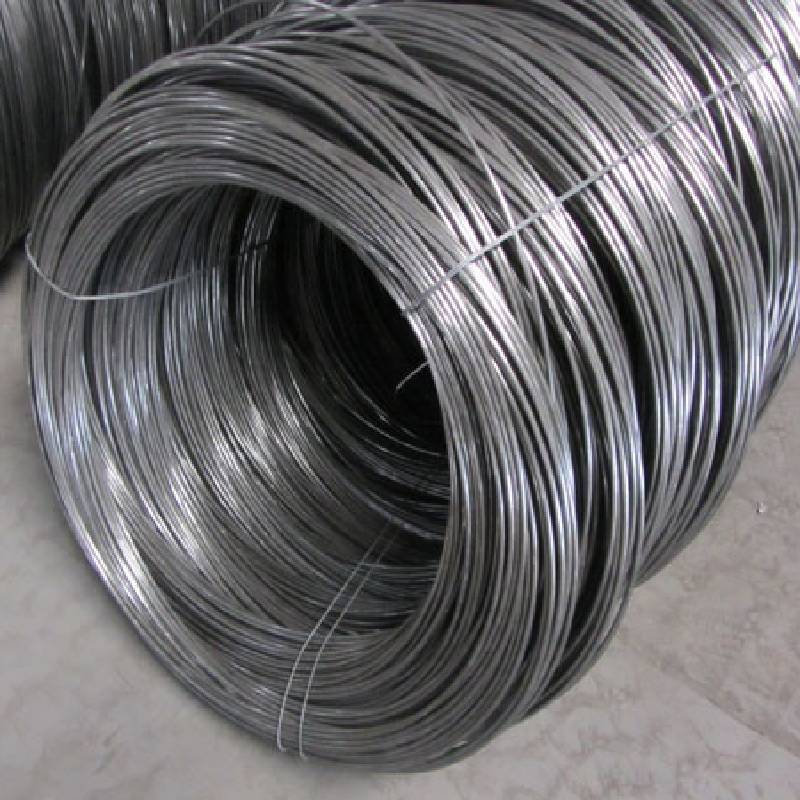In the vast landscape of modern industry, certain foundational materials play an indispensable role, often working behind the scenes yet critical to countless applications. Among these, Black Wire stands out as a versatile and robust component, integral to sectors ranging from construction and agriculture to manufacturing and beyond. This comprehensive guide delves into the intricate world of Black Wire, exploring its market dynamics, sophisticated manufacturing processes, precise technical specifications, and expansive utility. We aim to provide an authoritative perspective, grounded in industry expertise and practical experience, to empower stakeholders with the knowledge needed to make informed decisions.
The global market for Black Wire is characterized by a dynamic interplay of demand drivers, technological advancements, and evolving regulatory landscapes. Current industry trends highlight a sustained growth trajectory, primarily fueled by robust expansion in global construction activities, particularly in emerging economies. Infrastructure development, including residential and commercial buildings, roads, and bridges, remains a primary consumer of Black Wire, extensively used for rebar tying, fencing, and various reinforcement applications. According to a recent market analysis by Grand View Research, the global wire and cable market, which includes Black Wire as a significant component, was valued at USD 184.9 billion in 2022 and is projected to expand at a compound annual growth rate (CAGR) of 4.5% from 2023 to 2030, driven by urbanization and industrialization. This indicates a healthy and expanding ecosystem for high-quality wire products.
Beyond construction, the agricultural sector is another significant demand generator, utilizing Black Wire for baling hay, vineyard trellising, and general farm fencing, where its durability and cost-effectiveness are highly valued. Furthermore, the manufacturing industry employs Black Wire in the production of various wire forms, fasteners, springs, and mesh products. Technological advancements are also subtly influencing the sector, with increased focus on automated production lines, enhanced material traceability, and improved surface treatments to extend product lifespan and performance in specific environments. Sustainable practices are gaining traction, pushing manufacturers towards more energy-efficient production methods and recyclable materials. The integration of advanced quality control systems, leveraging IoT and AI, is also emerging as a key trend to ensure consistent product quality and minimize defects, thereby enhancing the trustworthiness of suppliers.
The production of high-quality Black Wire is a sophisticated process, a testament to precision engineering and metallurgical expertise. It begins with the careful selection of raw materials, typically high-carbon or low-carbon steel wire rods, depending on the desired final properties of the Black Wire. For instance, low-carbon steel (e.g., SAE 1008 or 1010) is often preferred for applications requiring higher ductility and ease of manipulation, such as rebar tying, while higher carbon variants might be used for applications demanding greater tensile strength.
The journey from a steel wire rod to finished Black Wire involves several critical stages, each meticulously controlled to ensure superior quality and performance. While a visual diagram or short video would best illustrate this, we will detail the key steps:

Image: State-of-the-art wire drawing machinery in operation, ensuring precise diameter reduction and enhanced mechanical properties for Black Wire.
Throughout this entire process, stringent quality control measures are implemented. This includes continuous monitoring of wire diameter, tensile strength testing, elongation tests, bend tests, and surface finish checks. Material traceability, from the raw wire rod to the final coiled product, is maintained rigorously, ensuring that every batch of Black Wire can be traced back to its origin, a hallmark of our commitment to transparency and trustworthiness.
The performance and suitability of Black Wire for specific applications are determined by a range of technical parameters and adherence to recognized industry standards. Understanding these specifications is paramount for procurement professionals and engineers alike.
Reputable manufacturers of Black Wire adhere to strict international and national standards, ensuring product quality and interoperability across global markets. Key standards include:
Adherence to these standards signifies a commitment to quality, reliability, and safety, enhancing user trust and ensuring the Black Wire performs as expected in its intended application. Our products at TIKEMETAL are manufactured under stringent quality assurance protocols, often exceeding industry benchmarks, to deliver a superior product experience.
| Parameter | Typical Range / Value | Unit / Standard |
|---|---|---|
| Material Grade (Carbon Steel) | SAE 1006 / 1008 / 1010 | ASTM / AISI |
| Carbon Content (C) | 0.06% - 0.12% | % by weight |
| Manganese Content (Mn) | 0.25% - 0.50% | % by weight |
| Diameter Range | 0.8 mm - 6.0 mm (approx. 20 SWG to 3 SWG) | Millimeters (mm) / Standard Wire Gauge (SWG) |
| Diameter Tolerance | ±0.02 mm to ±0.05 mm (depending on diameter) | Millimeters (mm) |
| Tensile Strength (TS) | 350 MPa - 550 MPa (for binding wire) up to 700 MPa+ (for high strength) | MegaPascals (MPa) |
| Yield Strength (YS) | Approx. 250 MPa - 400 MPa | MegaPascals (MPa) |
| Elongation at Break | ≥ 12% to ≥ 20% (depending on specific grade and application) | Percentage (%) |
| Surface Finish | Black Oxidized / Oiled, Smooth, Clean | Visual / Tactile Inspection |
| Coil Weight | 10 kg - 1000 kg (customizable) | Kilograms (kg) |
| Lifespan (Under typical conditions) | 5-10 years (indoor/protected outdoor) | Years |
The inherent properties of Black Wire—its excellent tensile strength, adequate ductility, and cost-effectiveness—make it a preferred material across a multitude of industries. Its applicability spans from heavy industrial uses to more nuanced agricultural and packaging requirements.

Image: A bundle of Black Wire coils ready for distribution, symbolizing its readiness for diverse industrial and agricultural applications.
Selecting a reliable supplier for Black Wire is as crucial as understanding the product itself. The market features numerous manufacturers, but not all offer the same level of quality, consistency, and service. When evaluating potential partners, consider the following critical factors:
At TIKEMETAL, we pride ourselves on being a premier provider of high-quality Black Wire. Our competitive edge stems from:

Image: Close-up of Black Wire coils, symbolizing the uniform quality and consistent coiling achieved through meticulous manufacturing processes.
We understand that standard specifications may not always fit unique project requirements. TIKEMETAL offers comprehensive customization solutions for Black Wire, including:
The practical utility of Black Wire is best illustrated through its successful deployment in various projects worldwide. These case studies highlight its reliability, cost-effectiveness, and versatility.
Challenge: A large consortium undertaking the construction of a critical section of a high-speed rail viaduct in Southeast Asia required an enormous quantity of binding wire for rebar reinforcement. The project demanded consistent wire quality, high tensile strength to withstand concrete pouring pressures, and excellent ductility for rapid manual and automated tying by a large workforce under tight deadlines. Any inconsistency could lead to significant delays and structural integrity issues.
Solution: TIKEMETAL supplied over 5,000 metric tons of custom-specified Black Wire, primarily in 1.2mm and 1.6mm diameters, over an 18-month period. Our engineers collaborated closely with the project management team to define optimal tensile strength and elongation properties for their specific rebar grades and tying methods. We implemented a dedicated production line to ensure consistent quality and adhered to a strict delivery schedule, often providing just-in-time delivery to multiple site locations.
Outcome: The consistent quality of our Black Wire significantly reduced rebar tying time and minimized material waste due to breakage. The wire's reliable performance facilitated smooth concrete pours, contributing to the project's adherence to its demanding timeline and budget. Site supervisors reported that the wire's ductility made it easy to work with, enhancing worker productivity and satisfaction, which was a key factor in achieving construction milestones. This project stands as a testament to the essential role of high-quality Black Wire in large-scale civil engineering.
Challenge: A prominent vineyard in California was expanding its operations, requiring a durable, cost-effective, and long-lasting trellising system for thousands of acres of new grapevines. The wire needed to withstand varying weather conditions (heat, occasional frost, UV exposure), support the weight of mature vines and fruit, and be resistant to agricultural chemicals and minor mechanical stresses from harvesting equipment. Longevity was a key concern to minimize maintenance and replacement costs over decades.
Solution: TIKEMETAL provided a specialized grade of Black Wire for this agricultural application. While galvanized wire is often preferred for outdoor long-term use, the client's budget and specific climate conditions (drier climate, less aggressive corrosion) allowed for a cost-optimized solution. We supplied 3.0mm diameter Black Wire, specifically treated with a robust oil-based coating that offered enhanced resistance to the elements and minimized friction with growing vines. Our technical team advised on optimal tensioning and installation practices to maximize the wire's lifespan and performance.
Outcome: The vineyard successfully implemented its extensive trellising system using our Black Wire. The wire demonstrated excellent long-term stability, adequately supporting the grapevines through multiple growing seasons. The client reported significant cost savings compared to galvanized alternatives, without compromising on the essential structural support needed. The ease of handling and installation of our consistent wire further contributed to labor efficiency during the setup phase. This case highlights how a well-specified Black Wire can be an ideal balance of performance and economic efficiency for large-scale agricultural infrastructure.

Image: Black Wire neatly coiled and ready for packaging, showcasing the final product’s readiness for diverse applications globally.
At TIKEMETAL, trust is the cornerstone of our operations. We understand that the reliability of our Black Wire directly impacts the success and safety of our clients' projects. Therefore, we integrate comprehensive quality assurance protocols, adhere to stringent certifications, and provide unparalleled customer support.
Our commitment to excellence begins at the raw material stage and extends through every phase of manufacturing. We employ a multi-tiered quality control system:
Our operations and products comply with leading international standards, reflecting our dedication to quality and responsible manufacturing:
We understand the importance of timely delivery in project timelines. Our robust logistics network and efficient production planning enable us to provide clear and reliable delivery schedules. Typical delivery periods range from 2-4 weeks for standard orders, with expedited options available for urgent requirements. We stand behind the quality of our Black Wire products with a comprehensive warranty against manufacturing defects, guaranteeing that our wire will perform as per agreed-upon specifications under normal use conditions for its expected lifespan. Our commitment extends beyond the sale, ensuring peace of mind for our customers.
Our commitment to customer satisfaction doesn't end with product delivery. We offer proactive and responsive customer support, including:
The primary material used for Black Wire is typically low-carbon steel wire rod, often conforming to grades like SAE 1006, 1008, or 1010. These grades are chosen specifically for their excellent ductility and good formability, which are crucial during the cold drawing process and for applications requiring bending or tying (e.g., rebar tying wire). While offering sufficient tensile strength for its common applications, low-carbon steel also allows for a more cost-effective production process compared to higher-alloy steels, making Black Wire an economical solution.
High tensile strength and consistent quality in Black Wire are achieved primarily through the cold drawing process. As the wire rod is pulled through progressively smaller dies, its cross-sectional area is reduced, and its crystalline structure is elongated. This work hardening increases the wire's tensile strength and hardness. Consistency is maintained through precise control over die sizes, drawing speeds, and intermediate annealing temperatures (if applied). Additionally, rigorous in-line monitoring and post-production testing (e.g., tensile strength, elongation, bend tests) ensure each batch meets strict mechanical property specifications and uniform dimensional accuracy.
Black Wire is commonly available in a wide range of diameters, typically from as fine as 0.8 mm (approx. 20 Standard Wire Gauge, SWG) up to 6.0 mm (approx. 3 SWG). However, custom diameters outside this range can often be produced. Dimensional tolerances are strictly controlled through precise wire drawing dies and continuous laser or eddy current gauging systems during the manufacturing process. Reputable manufacturers typically maintain a diameter tolerance of ±0.02 mm to ±0.05 mm, depending on the wire size and application, ensuring compatibility with automated machinery and consistent performance.
Black Wire can be suitable for some outdoor applications, particularly in drier climates or when sheltered from direct, continuous moisture. Its characteristic black surface finish, which often comes from a controlled oxidation process or a protective oil coating, provides a basic level of temporary corrosion resistance against atmospheric moisture and minor environmental exposure. However, it is not as corrosion-resistant as galvanized wire (zinc-coated) or stainless steel wire. For applications requiring long-term outdoor exposure in humid, wet, or chemically aggressive environments, galvanized Black Wire or other corrosion-resistant materials would be recommended for extended lifespan. The typical lifespan of standard Black Wire in protected outdoor environments is around 5-10 years.
Dimensional accuracy of our Black Wire is ensured through the use of high-precision tungsten carbide drawing dies and real-time diameter monitoring systems (e.g., laser gauges) integrated into our wire drawing lines. These systems provide immediate feedback, allowing for adjustments to maintain tight tolerances. For surface finish, raw material quality control is paramount to prevent surface defects from the start. Post-drawing, the wire undergoes mechanical descaling, acid cleaning, and the application of a uniform lubricant/coating (like lime or phosphate) before drawing. The final surface is then treated with a protective oil or black oxide coating, which ensures a smooth, clean, and consistent black finish, free from burrs or excessive scale.
When purchasing Black Wire, you should prioritize suppliers who adhere to recognized international quality management systems and product specifications. Key certifications and standards to look for include: ISO 9001:2015 (for quality management), and product-specific standards such as ASTM A853 (Standard Specification for Steel Wire, Carbon, for General Use), ASTM A641/A641M (if considering galvanized versions of the underlying wire), DIN EN 10016 (for steel rod for drawing), and JIS G3505 (for low carbon steel wire rods). These standards ensure consistency in material composition, mechanical properties, and manufacturing processes, guaranteeing a reliable and safe product.
Yes, Black Wire can be highly customized to meet specific industrial application requirements. Customization options often include: adjusting the wire's specific diameter (e.g., for automated machinery), tailoring tensile strength and elongation (e.g., for specialized springs or very precise bending applications), applying different surface treatments or lubricants for specific environments or processing needs, and providing custom coil weights, inner/outer diameters, or packaging methods to optimize handling and reduce waste in your operations. A reputable manufacturer like TIKEMETAL will work closely with clients to understand their unique needs and develop bespoke Black Wire solutions.
The future of the Black Wire industry is poised for continuous evolution, driven by advancements in material science, manufacturing automation, and increasing demands for sustainable practices. Innovations are focusing on developing enhanced surface treatments that offer improved, yet cost-effective, corrosion resistance without significantly altering the wire's fundamental properties. Automation in production lines, leveraging AI and robotics, will further refine precision, reduce waste, and increase production efficiency. Furthermore, the emphasis on circular economy principles will drive greater adoption of recycled steel in wire manufacturing and promote product recyclability at end-of-life. As global infrastructure and agricultural demands continue to grow, the role of high-quality, sustainably produced Black Wire will only become more critical, reinforcing its position as an essential industrial commodity.
For high-quality Black Wire solutions tailored to your specific needs, explore our product range at TIKEMETAL's Black Wire product page. We are committed to delivering excellence through superior products, advanced manufacturing, and dedicated customer service.
RELATED PRODUCTS